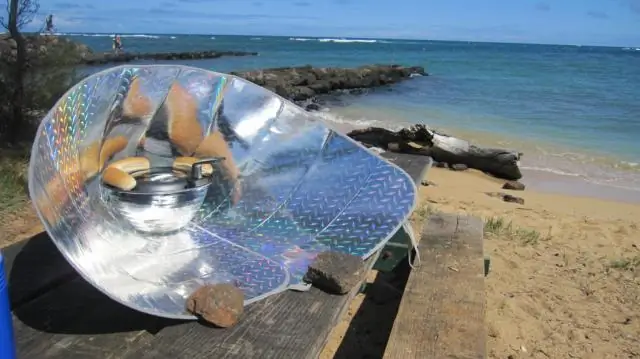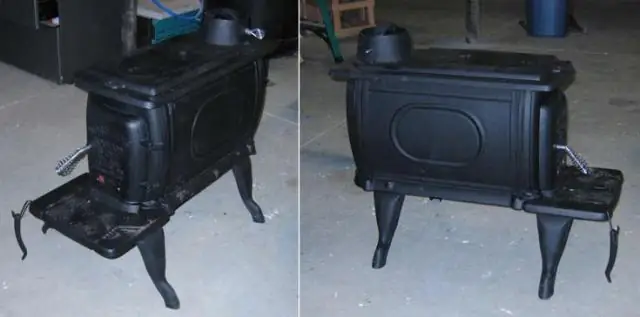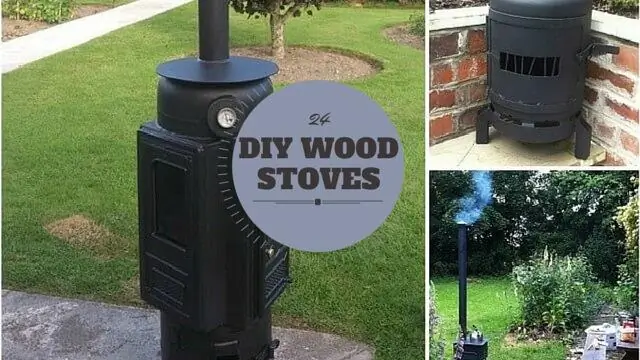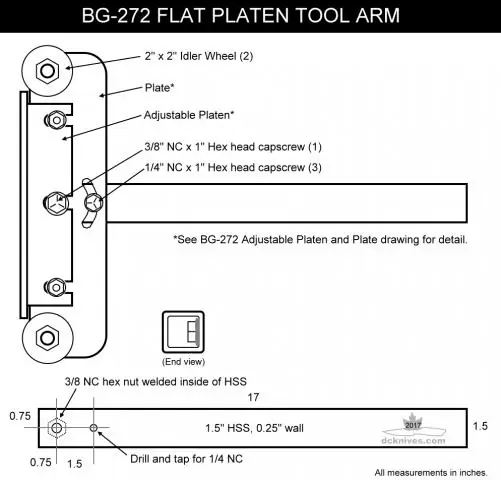
Table of contents:
- Solar water heater: the possibility of using a geo-collector and self-manufacturing of the device
- What is a solar water heater
- Types of solar collectors
- Which system to integrate a solar water heater into
- How to make a flat solar collector with your own hands
- Video: instructions for assembling a solar collector from aluminum cans
- Author Bailey Albertson [email protected].
- Public 2023-12-17 12:53.
- Last modified 2025-06-01 07:32.
Solar water heater: the possibility of using a geo-collector and self-manufacturing of the device

The sun is the largest source of safe and free energy. And if earlier people could not use it, now there are technologies that help to provide a house with heat and hot water only at the expense of the sun. Using collectors is a cost-effective and affordable way to make a country house more comfortable. You just need to choose the right solar collector (or make it yourself), and then introduce it into the existing heating system.
Content
-
1 What is a solar water heater
1.1 Scope of use of solar plants
-
2 Types of solar collectors
- 2.1 Table: Comparative characteristics of flat and vacuum collectors
- 2.2 Features of Flat Panel Solar Water Heaters
- 2.3 Features of vacuum collectors
-
3 In which system to integrate a solar water heater
- 3.1 Types of circulation
- 3.2 Selecting the type of circulation circuit
-
4 How to make a flat solar collector with your own hands
- 4.1 Tools and materials for work
- 4.2 Video: how to make a flat copper tube solar water heater
- 4.3 Installing the solar collector
- 4.4 Solar collector maintenance
- 5 Video: instructions for assembling a solar collector from aluminum cans
What is a solar water heater
A collector (water heater) is a device that collects energy from the sun's rays and converts it into heat. The sun heats the coolant in the collector, which is then used for hot water supply and heating or for generating electricity.
Modern solar water heaters can be complex, but any owner of a private house can independently make a device for their own needs. The main thing is to figure out what this device is for.

Three collectors fully satisfy the family's needs for hot water and heating
Scope of use of solar plants
In our country, the phrase solar water heater is still associated with a black tank on the roof of a summer shower booth, but this technology is successfully used all over the world. Solar collectors are common in the southern regions of Europe. Residents of private homes in Italy, Spain and Greece are required by law to use solar water heaters. China does not lag behind the West either. There, solar water heaters are installed on the roofs of high-rise buildings and provide hot water to all apartments. In 2000, there were so many solar power plants in the world that, put together, they would occupy more than 71 million m 2. Almost 15 million m 2 of them would be European.

Solar vacuum collectors almost completely occupy the roofs of Chinese new buildings
Such devices are used for hot water supply of domestic premises and industrial buildings, heating of private houses, administrative buildings, workshops. They are most in demand in the food and textile industries, since it is in this area that there are many production processes using hot water.
In the private sector, each person from Germany has 0.14 m 2 of solar collector area, from Austria - 0.45 m 2, from Cyprus - 0.8 m 2, and from Russia - 0.0002 m 2. The intensity of the sunlight in Russia only 0.5 kWh / m 2 less than in the south of Germany. This means that the low popularity of solar collectors in the northern regions is not due to geographical reasons.

Even pool water can be heated with an extensive manifold system
Types of solar collectors
Engineers have developed flat, tubular with vacuum, concentrators with parabolic cylindrical reflectors, aerial, solar towers and other types of installations. The most popular for domestic purposes are flat and vacuum water heaters.
Table: Comparative characteristics of flat and vacuum collectors
| Flat collector | Vacuum manifold |
|---|---|
| Easy to do with your own hands from scrap materials. | Manufactured in an industrial environment or assembled from factory parts. |
| Pays off quickly. | Pays off three times longer than flat. |
| Less likely to overheat in hot weather. | Prevents accumulated heat from returning to the environment. |
| Works effectively in summer or in countries with hot climates. | Suitable for cold regions, works in winter at temperatures down to -30 o C. |
| It has high windage, so a strong gust of wind can blow it off the roof. | The wind passes freely between the vacuum tubes, so the probability that the collector will not be hit by the storm is higher. |
| It cleans itself of snow, frost and ice. | Productivity is 2-3 times higher than that of a flat collector (with equal areas). |
Features of Flat Panel Solar Water Heaters
The device is a panel, inside of which there are copper tubes with a dark coating. They heat up water, which is then collected in a tank and used for hot water supply (hot water supply). If you make the collector yourself, then expensive components can be replaced with available materials:
- instead of copper pipes, you can take steel, polyethylene or just a radiator from an old refrigerator;
- a wooden frame can become a replacement for a metal one, although it weighs more;
- the chrome-plated absorber will replace the usual black paint;
- a sheet of glass or cellular polycarbonate will serve well as a protective cover, and foam will serve as a heater.
The main thing is to ensure the tightness of the panel, but for this it is enough to seal all the seams with construction silicone. The main disadvantage of such devices is that the heated coolant radiates heat into the air and cools a little before entering the storage tank. The use of thermal insulation and sealing of seams are designed to combat precisely this effect.

Expensive parts of an industrial collector can be replaced with cheaper counterparts, for example, use steel instead of copper pipes, and make the frame of the device wooden
If water is not taken from the flat collector, on a hot sunny day it can heat up to 190-210 o C, which can lead to rupture of pipes with a coolant or connecting elements. For those who occasionally use a solar water heater, it is important to install a storage tank that can eliminate excess pressure in the pipes. Another option is to use mineral oil rather than water as a heat sink. Its boiling point is higher, which reduces the risk of system damage. In this case, a heat exchanger is needed, in which the oil will transfer the accumulated heat to the water without direct contact.
Features of vacuum collectors
This type of solar water heater consists of individual tubes, each of which is in an airless environment. This design made it possible to reduce heat loss on the way from the collector to the storage tank and increase the efficiency of the system. Thanks to this, vacuum collectors work perfectly during the changing seasons (autumn, spring) and in winter.

The vacuum manifold consists of tubes placed in an airless environment
Copper tubes are also used in vacuum solar water heaters because this material provides good heat transfer and hygiene at the same time. The rest of the elements are similar: glass (borosilicate for better heat transmission), under it is a black absorbing layer, a tube with a heat carrier and a substrate. It is easier to ensure the tightness of the system, since there is only one seam - the connection between the tube and the storage tank.

Separate pipes are connected to the main pipe of the vacuum water heater
Cold water gradually heats up from alternate contact with hot copper pipes. This is the only way to remove heat from the vacuum solar plant, so it is important to provide it with a regular flow of cold water, that is, use hot water throughout the day. Antifreeze is used as a coolant in vacuum solar collectors to increase the durability of the system. It tolerates heating to 300 of the C and does not freeze when a cloudy day the device temperature is reduced to -40 to S.
It is impossible to create a full-fledged vacuum solar collector with your own hands: making a thick-walled tube from borosilicate glass is unthinkable in artisanal conditions. Therefore, a more reliable option would be to buy factory flasks (coaxial and feather varieties are offered) and assemble the solar water heater on site. But since even such work requires remarkable locksmith skills, it is better to buy a finished product with a guarantee from the manufacturer.
Which system to integrate a solar water heater into
In order for hot water to start flowing out of the tap, it is important not only to choose a collector, but also to create a whole system for it from a storage tank, connecting pipes, taps and other elements.
Types of circulation
Determine if you can install the storage tank above the manifold level. It depends on which of the two types of circulation will be in the system.
-
Natural circulation is created due to the difference in density between cold and hot water. The heated liquid tends to rise, which determines the location of the storage tank. If the roof is complex, choose a well-lit place for the manifold and place the tank under the ridge.

Natural circulation scheme With natural circulation, water moves through the system due to the difference in density between cold and hot water.
-
Systems with forced circulation work thanks to a pump that pumps warm water into a prepared tank. In this case, it becomes possible to place the elements of the system far from each other, for example, put a storage tank in the attic or in the basement. It is better for the exterior and requires less effort to insulate the tank itself. But the pipes leading from the collector to the tank must be provided with thermal insulation, otherwise there is a risk of losing all the heat along the way. Forced circulation requires the use of electricity, so if there is no electricity at the dacha or often power outages, this option will not work.

Forced circulation circuit In systems with forced circulation, hot water is moved by a pump
If you decide to use heat transfer oil in the manifold, provide a pump for forced circulation. Otherwise, due to the low coefficient of expansion of the oil, the system simply will not work.
Selecting the type of circulation circuit
Three types of systems are common:
-
Open loop. This is the easiest way to supply hot water to your home. Its main difference is that the coolant in the collector is necessarily water. First, it heats up in tubes, then enters the storage tank, and then directly into the faucet in the kitchen or bathroom. That is, the water does not circulate in a circle, but in an open circuit, a new portion is heated each time.

Open loop circuit In an open-loop hot water system, water does not circulate in a circle
-
Single-circuit. It is preferable when it is supposed to heat the house with the help of solar heat or to make the operation of electric heating cheaper. Its difference is that the water heated by the sun enters the heating pipes. The coolant moves in a circle in the system. This is a closed circulation cycle. Since the solar collector is used in winter and off-season, select vacuum models and include an additional heater in the system. An electric or gas boiler helps to bring the coolant to the desired temperature on cold and cloudy days, as well as at night.

Single-circuit circulation system diagram In a single-circuit circulation system, the solar collector works in parallel with the boiler
-
Double-circuit. This option involves the transfer of heat from the collector to the system through a special heat exchanger. Since there is no direct contact between the coolant and water, oil or antifreeze is used in the collector. The system is optimal for country houses in which people live throughout the year. In it, the collector is used both for hot water supply and for heating at the same time. As a rule, a boiler and / or a boiler is also integrated into it for additional heating of water, and several collectors are used (depending on the number of residents and the climatic characteristics of the region).

Diagram of a two-circuit circulation system In a double-circuit circulation system, there is no direct contact between the coolant of the solar water heater and water
How to make a flat solar collector with your own hands
This requires a drawing. You will also need to calculate the area of the water heater in accordance with the needs of the family. This parameter is determined by the formula: A = K * F * SF / (G * η) AW = 1 / (G * η) A = K * F * SF * AW, where:
- A - collector area, m2;
- AW is the reduced area that is capable of generating 1 kW * hour per day, m2 * day / (kW * hour);
- Η - efficiency of one collector,%;
- G - total solar radiation per day, typical for a given area, kW * hour / (m2 * day);
- K - coefficient taking into account the value of the angle of inclination of the collectors and their orientation relative to the cardinal points;
- F is the energy required to heat water per day, kW * hour / day;
- SF is the share of the sun's energy in covering the heat demand,%.

For the construction of a collector, you will need a detailed drawing indicating the number and size of parts
Tools and materials for work
To make a flat solar collector measuring 2.28x1.9x0.1 m with metal-plastic pipes and a wooden frame, you will need:
- hacksaw or jigsaw for cutting wood and plywood;
- scissors for metal-plastic pipes;
- screwdriver;
- brushes and a spray gun or spray paint can for blackening mounted pipes.
Sequencing:
-
Assemble a box for the base of the collector from two sheets of plywood measuring 1.52x1.52 m, 1 cm thick. One of them cut out to create sides for details: 0.76x0.38 m in size - 4 pcs., 1.52x0.76 m in size - 1 PC.

Plywood cutting scheme Plywood sheets are used to create a collector box
- Paint the inner surface of the resulting box with black matte paint, and the outer surface with white or cover with a protective varnish.
-
Create a frame for attaching a box from a 5x5 cm bar, according to the attached diagram. In total, 60 m of timber will be needed. Before assembly, it is important to treat the parts with a wood preservative to protect the material from precipitation and temperature extremes. Fasten the parts together with wood screws using 5x5 cm metal corners.

Box stand scheme A stand (frame) for the box is made of a bar
- Fix the box on the prepared stand and carry out further assembly on this inclined stand.
-
Make markings where the pipes will go and where the pipes will fit. Color them black too, so as not to increase heat loss.

Fasteners for manifold pipes For secure fixation, the mounting tubes are placed in four rows
- Cut the 0.5-inch-thick reinforced plastic pipes into pieces to the desired length. To avoid making a mistake, use the first snippet as a reference. You should get 45 pieces of 2.14 m each.
- Assemble the snake from the pipes on the stand, using fittings for metal-plastic pipes at turns. A total of 44 angled elbows of the "mom-to-mother" and "mom-to-dad" type and 88 adapters from a metal-plastic pipe to a fitting are required. Use sealing thread to seal the joints. At the beginning and end of the snake, fasten the adapters for connecting the water supply and drainage hoses.
-
Paint the structure black using a spray gun or can.

Assemble the manifold on an inclined stand The collector coil is painted with black paint
- Connect the coil to the pump and make sure there is no leakage when pumping water. If any connection is not tight enough, drain and reassemble it, and then check again.
-
Cover the top of the box with clear glass or solid polycarbonate. If it is not possible to use a solid sheet, make an aluminum frame in the size of the available fragments (preferably no more than four) and secure the panels securely. Carefully treat each joint with transparent silicone so that the water heater is tight.

Collector glass The collector shield can be assembled from several pieces, further strengthening the joints
According to the described scheme, a collector with a capacity of 1.6-2 kW is assembled.
Video: how to make a flat copper tube solar water heater
Solar collector installation
The device is installed on the roof. This option is suitable for both country houses and high-rise buildings. It is better if the roof is pitched and the angle of inclination is close to the latitude of this region. In this case, you will need to attach the brackets to the boards on its southern side through the roofing material. The collector will be placed 15-20 cm above the roof level, parallel to the ramp. This is the most harmonious solution, especially if several water heaters are used in the house. Sometimes the collector is recessed into the roof so that the protective screen is flush with the decorative roof covering. But this method is much more costly and can weaken the roof structure.

It is best to mount the flat-plate collector system on a pitched roof
On flat roofs, the collectors are mounted on special structures that hold them at a given angle. Stands can be purchased ready-made or welded on their own from the corners. The metal structure is attached to the base with large anchor bolts.

On a flat roof, the collectors are mounted on special structures
In summer cottages, solar collectors are installed next to the house or pool in an open sunny area. In this case, they choose a place on an already created site or equip a reliable base separately. To do this, you will need a rectangular platform with a tamped loose cushion, waterproofing and a coating of paving slabs, porcelain stoneware, and other durable, hard and weather-resistant material. Subsequently, a metal or wooden easel stand is mounted on it, on which the solar collector is attached.

Installing a solar collector on supports that do not have a common base is considered less reliable, but helps save space
Solar collector maintenance
Like any other equipment, the device requires service. The most common works:
- Glass washing. The protective panel of the collector becomes cloudy over time from dust and deposits. To prevent this from affecting the efficiency of the system, it is worth cleaning it once a month (during the working period) with a regular glass cleaner or just soapy water (if the transparent panel is not made of glass). Since the housing is sealed, no preparatory work is required to shut down the system.
- Draining flat-plate collectors if not used in winter. Freezing water during cloudy winter weather can rupture pipes and fittings. Therefore, with the onset of cold weather, it is necessary to turn off the water supply and completely drain the liquid from the pipes. Then by the next summer cottage the collector will be ready for work again. The rest of the solar water heater is weather-resistant, so it is not necessary to remove them from the roof of the country house.
- Replacing the coolant if it deteriorates due to violation of operating rules. Antifreeze used in vacuum solar collectors is very sensitive to overheating. If the water heater could not transfer heat to the water (no hot water was used in the house, the heating system was turned off), flakes form in the liquid and thin copper tubes and a filter are clogged. As a result, the collector is unable to perform its functions normally. In this case, completely drain the antifreeze from each flask, flush the tube and fill the system with new specialized antifreeze (for collectors, not cars). The filter should also be cleaned and the cartridge replaced. After starting the system, accidentally remaining flakes may reappear in the filter, therefore, for the first day of operation of the collector, it is necessary to control it and, if necessary, clean the cartridge.
-
Replacing broken glass. The protective panel sometimes breaks due to hail, vandals, and other reasons. It is not difficult to replace the glass in a flat collector: just remove the old one and fix the new one with silicone sealant. The work will take no more than half an hour, you do not need to turn off the system. The entire flask will need to be replaced in the vacuum manifold. You will have to order it from the same manufacturer.

Change the flask of the vacuum manifold It is better to entrust the replacement of a damaged vacuum manifold flask to professionals.
If the collector was purchased, at the first breakdown it is worth calling the master, and during the warranty period - contact the manufacturer's representative. A homemade solar water heater will have to be repaired on its own, but finding a breakdown and fixing it in a home-made product is much easier than in a factory one. The experience of collector repairmen suggests that you first need to check the condition of the valves, sensors, storage tank and pump, since they are less reliable than the solar plant itself.

In DHW systems with a solar collector, valves and sensors most often fail.
Video: instructions for assembling a solar collector from aluminum cans
The owners of solar collectors are sure: once you evaluate the capabilities of this device, it will simply be impossible to do without it. Now you can provide your house or summer cottage with cheap and safe heat.
Recommended:
Do-it-yourself Potbelly Stove In The Garage - How To Make It On Wood, Installation, Drawings, Diagram, Device, How To Properly Weld From A Pipe, Where It Is Better To Put + Video

Design features of a stove stove, pros and cons. Step-by-step instructions for making sheet metal and a milk can for a garage with your own hands
Do-it-yourself Wood Stove - How To Make Economical Wood-fired Stove Heating, Device, Diagram, Drawing, Design With A Water Circuit, Reactive, Iron, Metal, For A Greenhouse + Video

Features and types of wood-burning stoves. Sizing and finding a place to install the oven. Do-it-yourself wood stove installation. Operating a wood-fired oven
Diy Pyrolysis Oven: Drawings, Diagram, Step-by-step Instructions, Etc. + Video

Features of the pyrolysis oven and its advantages. Types of structures, materials and drawings for self-production. Operating rules
Pancakes On Mineral Water: A Step-by-step Recipe For Thin Pancakes With Mineral Water, Photo And Video

Step-by-step recipe for making thin pancakes with holes in mineral water
Why Cats Are Afraid Of Water: Reasons For Fear, Rules For Bathing At Home, Is It Possible To Teach A Cat To Water Procedures, Video

Are cats afraid of water; swimming cat breeds; why the cat does not like to get wet; how to teach her to wash; what to do if this is not possible. Owner tips
